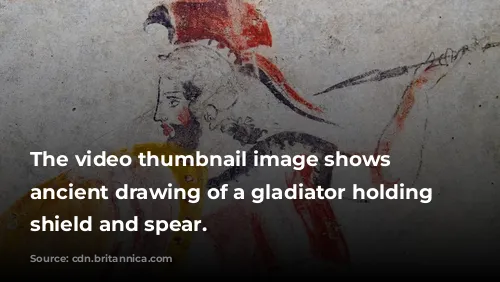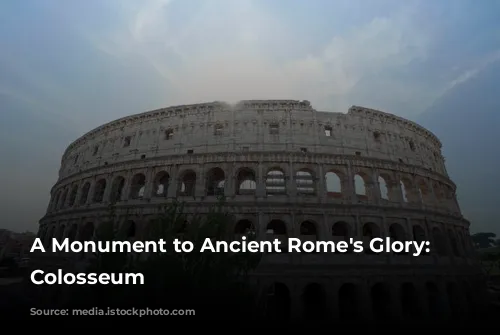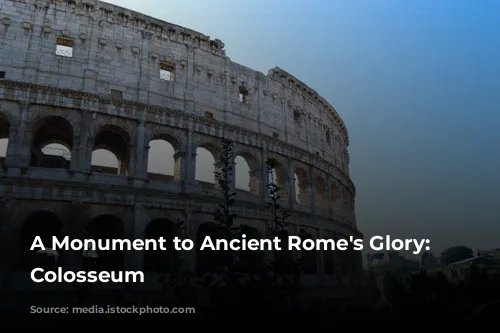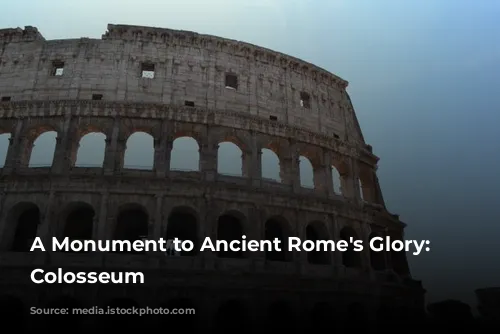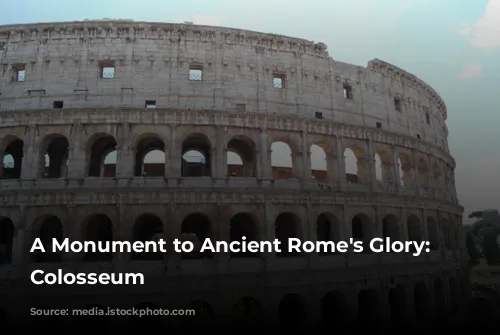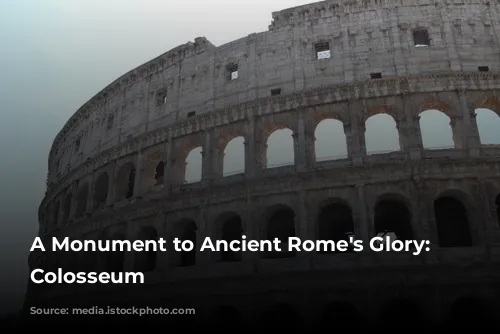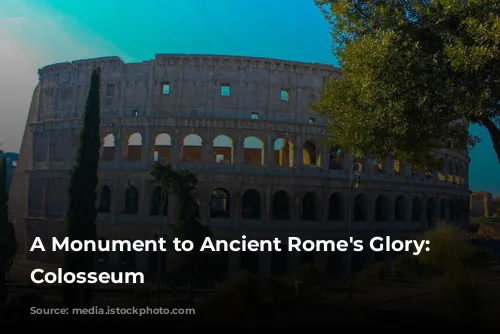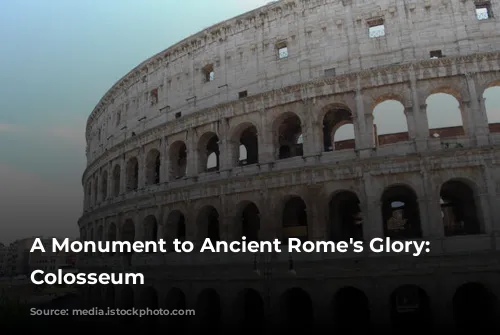The Colosseum, one of the few mostly intact remnants of the Roman Empire, stands as a powerful symbol of ancient Rome’s architectural and engineering brilliance. It’s a testament to their ability to create structures that have endured through the ages. Not only is it a historical marvel, but it also generates significant revenue for the Italian government. In 2018, the Colosseum, Roman Forum, and Palatine Hill together generated over $63.3 million (€53.8 million) in tourism revenue, making it Italy’s top tourist attraction.
This iconic structure has witnessed both triumphs and tribulations. After the fall of the Western Roman Empire, the Colosseum fell into a state of disrepair. During the 12th century, the Frangipane and Annibaldi families repurposed the arena as a fortress, a far cry from its original purpose. In the late 15th century, Pope Alexander VI allowed the Colosseum to be used as a quarry, stripping it of its precious materials. After centuries of neglect, state-funded restoration efforts began in the 1990s, breathing life back into this architectural wonder.
The Rise of the Colosseum: From Imperial Dreams to Public Entertainment
The Colosseum was born from an imperial ambition to revitalize Rome after the turbulent year of the four emperors in 69 CE. Like other amphitheatres, Emperor Vespasian envisioned the Colosseum as a grand entertainment venue, a place for gladiatorial contests, animal hunts, and even mock naval battles. It was designed to awe and entertain the Roman populace, showcasing the empire’s power and magnificence.
Construction of this colossal structure began under Vespasian between 70 and 72 CE. The completed Colosseum was dedicated in 80 CE by Vespasian’s son and successor, Titus. The fourth story was added by Emperor Domitian in 82 CE. The Colosseum’s construction was funded by the spoils of war, specifically, the plunder from Titus’s sack of Jerusalem in 70 CE. Sadly, it was also built by enslaved Jews from Judea, highlighting the darker side of this ambitious project.
A Colossal Structure for Colossal Events: The Design and Function of the Colosseum
The Colosseum, also known as the Flavian Amphitheatre, is a majestic elliptical structure built of stone, concrete, and tuff. It stands four stories tall at its highest point, measuring a staggering 620 by 513 feet (189 by 156 meters). This vast structure could accommodate up to 50,000 spectators, making it one of the largest amphitheatres ever built. The Colosseum was famously used for gladiatorial combat, a spectacle that captivated the Roman public.
The Colosseum was strategically located just east of the Palatine Hill, on the grounds of Nero’s Golden House. This location was not merely practical but also symbolic. Vespasian, whose ascent to the throne was humble compared to Nero’s tyrannical reign, chose to replace the emperor’s private lake with a public amphitheater. It was a deliberate act of replacing luxury with public entertainment, symbolizing the shift in power and the priorities of the Flavian emperors.

A Masterpiece of Roman Engineering: From Design to Execution
The Colosseum’s construction was a testament to Roman engineering prowess. Unlike earlier amphitheatres, which were often built into hillsides for support, the Colosseum was a freestanding structure built entirely of stone and concrete. It utilized a complex system of barrel and groin vaults to create its distinctive shape and support its weight. Three of the arena’s stories are encircled by arcades framed by engaged columns in the Doric, Ionic, and Corinthian orders. This arrangement of columns, known as the assemblage of orders, became a cornerstone of Renaissance architecture.
The Colosseum’s materials reflect the Roman’s ingenuity. The main structural framework and facade are travertine, a durable limestone quarried nearby. The secondary walls are volcanic tufa, a lightweight but strong volcanic rock. The inner bowl and arcade vaults are made of concrete, a Roman innovation that allowed for large-scale construction.
A Spectacle for the Masses: The Colosseum in Action
The Colosseum provided a magnificent setting for a variety of events, from gladiatorial combat to animal hunts and even mock naval battles. The amphitheater could seat up to 50,000 spectators, who were protected from the sun by a massive retractable awning known as a velarium. Supporting masts extended from corbels built into the Colosseum’s top story, and hundreds of Roman sailors were needed to manipulate the rigging that extended and retracted the velarium.
The Colosseum hosted thousands of hand-to-hand combats between gladiators, contests between men and animals, and even large-scale battles, including mock naval engagements. While the Colosseum was the scene of these brutal spectacles, it is uncertain whether early Christians were martyred there.
A Legacy of Resilience: The Colosseum Through the Centuries
In medieval times, the Colosseum was repurposed as a church, then used as a fortress by the Frangipane and Annibaldi families. The Colosseum suffered damage from lightning, earthquakes, vandalism, and pollution. The marble seats and decorative materials were stripped away, leaving it a mere quarry for over a thousand years.
Preservation efforts for the Colosseum began in earnest in the 19th century, with notable contributions from Pius VIII. A major restoration project was undertaken in the 1990s. Today, the Colosseum is one of Rome’s most popular tourist attractions, welcoming nearly seven million visitors annually. It continues to captivate visitors with its grandeur, inspiring awe and wonder. The Colosseum stands as a testament to Roman engineering, architectural brilliance, and the enduring power of history. Changing exhibitions related to the culture of ancient Rome are regularly mounted, offering visitors a deeper understanding of the world that once existed within its walls.
